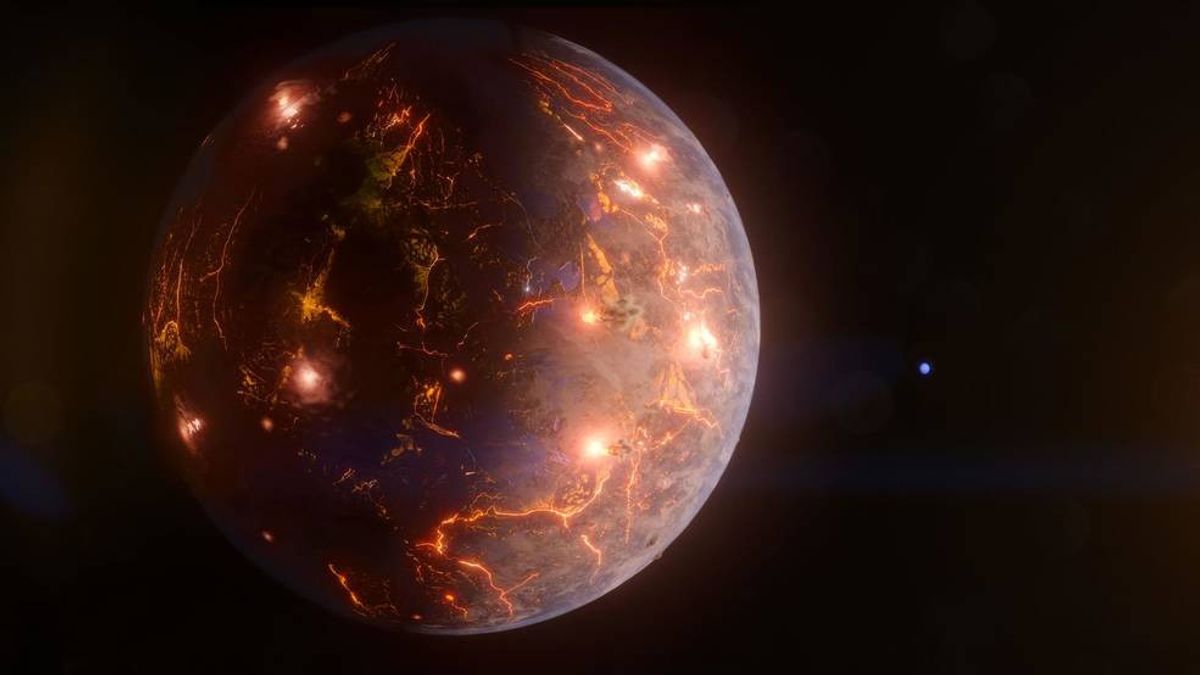JAKARTA - An extrasolar planet the size of the Earth but covered with a volcano, astronomers have found it. This planet is claimed to often experience volcanic explosions.
Armed with data from NASA's Transiting Exoplanet Survey Satellite (TESS) and retired Spitzer Space Telescope, as well as a series of ground-based observatories, astronomers discovered a planet dubbed LP 791-18 d.
LP 791-18 is tidally locked, meaning the same side is constantly facing its star, said iREx co-author and professor of astronomy Bj Sempert Benneke, who planned and supervised the study.
The afternoon may be too hot for liquid water to be on the surface. But the amount of volcanic activity we suspect occurred across the planet could sustain the atmosphere, which allows water to condense at night," he added.
LP 791-18 d orbits a small red dwarf star about 90 light years in the constellation of the southern crater. Astronomers estimate the planet is only slightly larger and massive than Earth.
Indeed, astronomers already know about two other worlds in the system before this discovery, called LP 791-18 b and c.
SEE ALSO:
The inner planet b measures about 20 percent larger than Earth. While the outer planet c measures about 2.5 times the size of Earth and more than seven times its mass. During each orbit, the planet d and c pass very close to each other.
Every more massive trajectory near planet c produces a gravitational pull on the planet d, making its orbit a bit elliptical. On this elliptic path, the planet d changes slightly shape every time it surrounds the star.
The deformation can create enough internal friction to substantially heat the interior of the planet and produce volcanic activity on its surface.
This method is similar to Jupiter and its several months that affect Io. Furthermore, the planet d is on the edge of the habitable zone, the traditional distance from the star where scientists hypothesized that liquid water could exist on the surface of the planet.
If the planet is geologically active as alleged by astronomers, it can maintain the atmosphere. Temperatures can drop quite on the night side of the planet so that water condenses on the surface.
Planet c has been approved to observe time on the James Webb Space Telescope, and astronomers think planet d is also an extraordinary candidate for atmospheric study by the mission.
Meanwhile, Spitzer's observations of the system included the latter being collected by satellites before being deactivated in January 2020.
"It's been amazing to read about the continuation of discovery and publications years after Spitzer's end of the mission," said Spitzer project manager Joseph Hunt.
It really shows the success of our first-class engineers and scientists. Together they built not only spacecraft but also data sets that continue to be assets for the astrophysics community," he added.
The English, Chinese, Japanese, Arabic, and French versions are automatically generated by the AI. So there may still be inaccuracies in translating, please always see Indonesian as our main language. (system supported by DigitalSiber.id)












